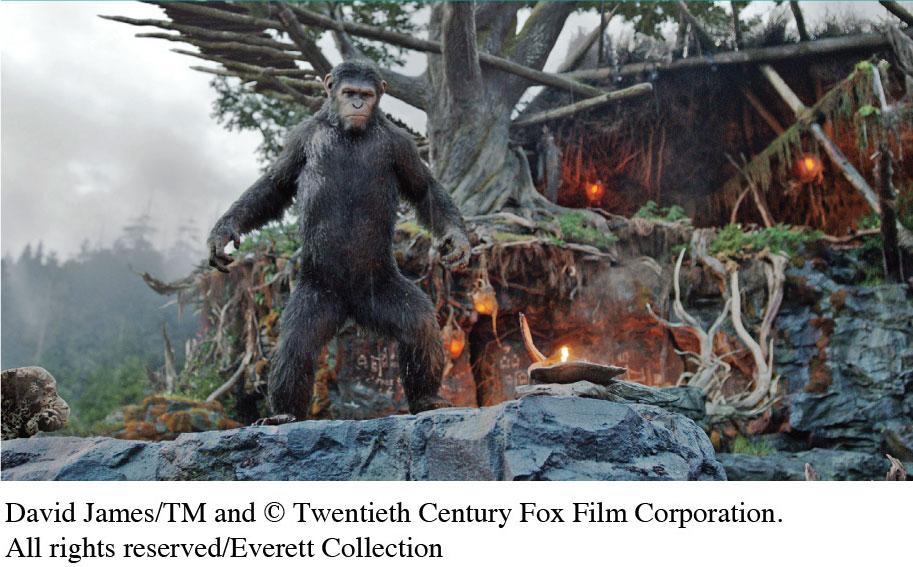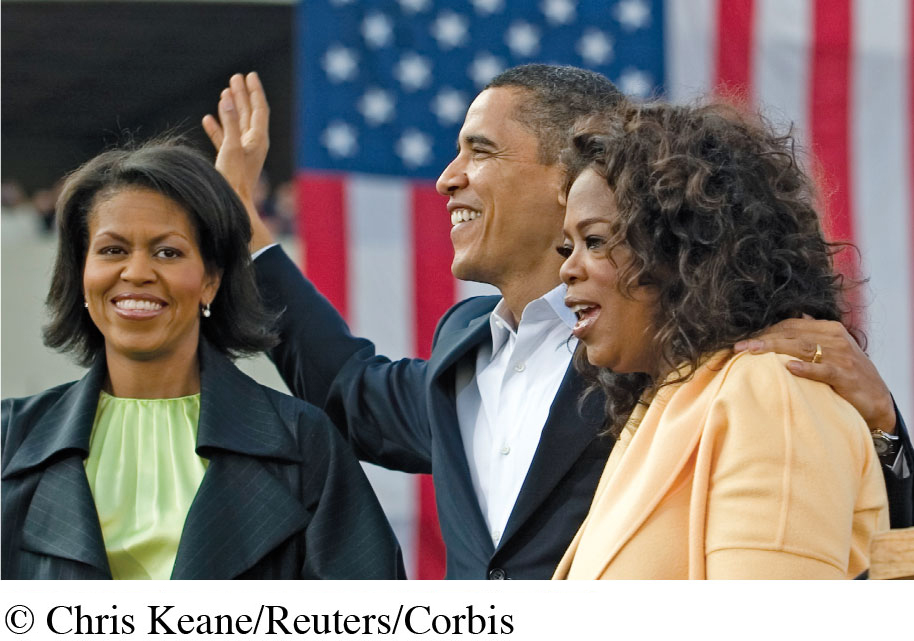Critiquing Media
To acquire media literacy, we can read the findings of cultural and social science researchers who have studied various aspects of the media. However, both models have their limits; thus, it’s important to view their conclusions with a critical eye. We can also learn to critique media content ourselves in a methodical, disciplined way. Whatever approach we use to develop media literacy, it’s helpful to always keep in mind the benefits of a critical perspective.
Evaluating Cultural and Social Scientific Research
Examining the findings of both cultural and social scientific research on media can help us follow a critical process that consists of describing, analyzing, interpreting, evaluating, and engaging with mass media. But the two models have strengths and weaknesses that are important to keep in mind. The cultural model is best at recognizing the complexity of media culture and providing analyses that draw on descriptive, critical, historical, ethnographic, political, and economic traditions. Yet this model has a downside: Although cultural studies can help us see media from new perspectives, the conclusions laid out in a particular study may simply be the author’s interpretation. Thus, they may not necessarily explain cause-and-effect connections in situations other than what the author examined.
The social scientific model seeks to develop and test theories about how the media affect individuals and society in measurable ways. This approach produces conclusions based on hard numbers, which policy makers often find comforting. It may suggest a clear chain of cause and effect, or at least a statistical relationship between the media and an effect.

But like the cultural model, the social scientific model has limits, too. For example, the options provided in a multiple-choice survey question might not cover all the possible responses that participants could give. As a result, researchers obtain an incomplete picture of how people respond to particular media. Also, definitions of what is being measured may confuse things. To illustrate, researchers might count a bonk on the head shown in a movie as an act of violence, even though the event could be purposeful, accidental, deserved, or part of a character’s fantasy. Researchers can thus neglect to ask more nuanced questions, such as whether accidental incidents of violence have a different effect on movie viewers than do purposeful acts of violence. Finally, many social scientific studies are limited to questions that their funding sources—the government, media industry associations, or granting agencies—ask them to study. This situation further constrains the scope of their research.
Ultimately, though, the quality of any media research—cultural or social scientific—depends on the nature of the questions asked and the rigor of the method used. Often, “triangulating” with two or more approaches to test a question makes for much stronger conclusions. For those of us seeking to strengthen our media literacy by consulting research, the best approach may be to balance findings on a particular question from both the cultural and the social scientific models.
Conducting Our Own Critiques
If we want to conduct our own critiques of specific media, we’ll need a working knowledge of the particular medium being addressed—whether it’s a book, a TV show, a song, a movie, a video game, a magazine, a radio show, or some other form. For example, suppose our goal is to develop a meaningful critique of the TV show Dexter (in which the main character is a serial killer), Rush Limbaugh’s conservative radio program, or weekly magazines’ obsession with Kate Middleton. In each case, we will need to thoroughly familiarize ourselves with the show, program, or magazines in question and start thinking about what messages they seem to be conveying. As we begin this process, we will also need to transcend our own preferences and biases. For instance, we may like or dislike hip-hop, R&B, pop music, or country, but if we want to criticize the messages in one or more of these musical genres intelligently, we need to understand what they have to say and consider why their messages appeal to particular audiences.

Familiarization and a certain amount of self-conscious detachment, then, are the preliminaries of a rigorous process that moves beyond matters of taste or, worse, a cynical, wholesale dismissal of culturally significant experiences. Becoming truly media literate requires mastering this critical process and applying it to everyday encounters with the communication media. The process encompasses five steps: Description, Analysis, Interpretation, Evaluation, and Engagement (see “The Critical Process behind Media Literacy”).
Benefits of a Critical Perspective
Developing an informed critical perspective on the media enables us to participate in a debate about media’s impacts on our democracy and culture. For instance, on the one hand, the media can be a force for strengthening our democracy and making the world a better place. Consider the role of television in documenting racism and injustice in the 1960s—coverage that encouraged the Civil Rights movement. Or consider how the cultural traditions surrounding sports and games can build bridges between peoples even as it generates a backlash (see “Media Literacy Case Study: Football, Fútbol, and Soccer”).
On the other hand, the media have helped create a powerful commercial culture in our nation—a culture in which fewer and fewer multinational corporations dominate our economy and generate more and more of the media messages we consume. A society in which only a few voices are telling us stories about what’s important, what our values should be, and how we should behave is hardly a healthy democracy.
Because the media constitute forces for both good and ill, it’s that much more important for each of us to think carefully about which media we consume; what messages we draw from those media; and how those messages affect our actions, the quality of our lives, and the health of our democracy. We also need to ask questions, such as the following:
Why might some people continue clinging to either/or thinking about media (such as high-brow versus low-brow books or movies) when so many boundaries in our society have blurred? Does this either/or thinking reflect a desire to keep people in their “proper” socioeconomic class?
What does it mean that public debate and news about everyday life now seem just as likely to come from Oprah, The Daily Show, or bloggers as from the New York Times or the NBC Nightly News?9 Can we no longer distinguish real news from entertainment? If so, does this affect how well informed we are?
How can we hone our awareness of the economic interests fueling the messages delivered through the media we consume? For example, do you listen to a talk show on a radio station that survives on advertising revenue? If so, ask yourself how the host might distort information (e.g., deliberately inciting conflict between guests) to attract more listeners and therefore bring in more advertising revenue. (Advertisers only want to spend money on ads that will reach as many people as possible.) If such distortion is taking place, how reliable is the information you’re consuming by listening to the show?
Unfortunately, we can’t rely only on professional media critics or watchdog organizations to do all the work of critiquing the media for us and analyzing their effects on our lives. Each of us is responsible for doing some of that work ourselves. As you read through the chapters in this book, you’ll learn more about each type of media—and you’ll hone your ability to examine each with a critical eye.